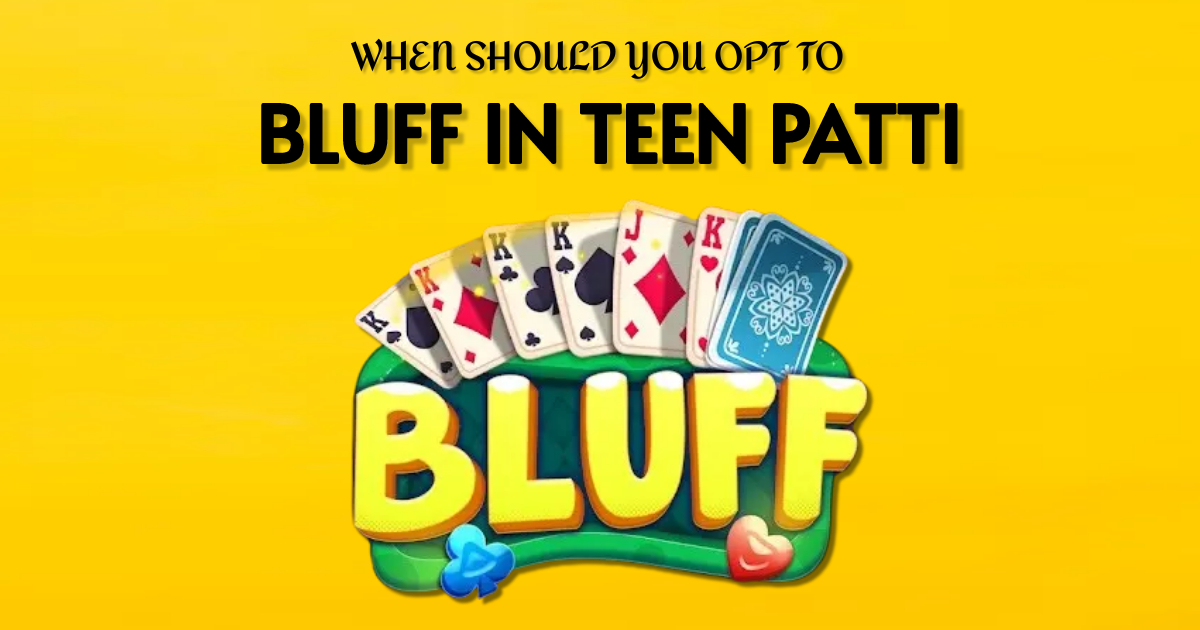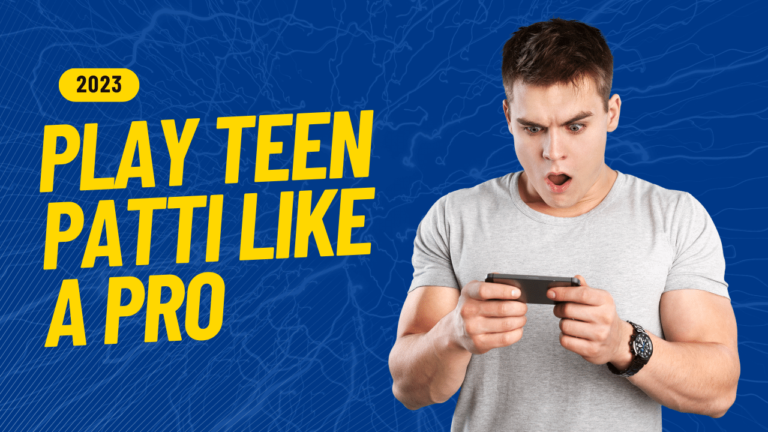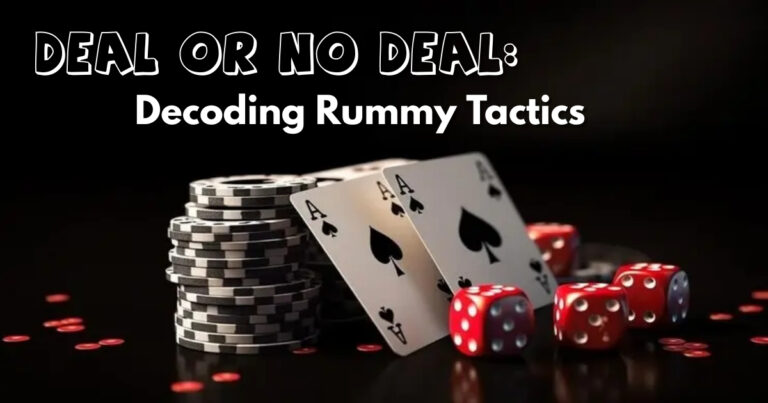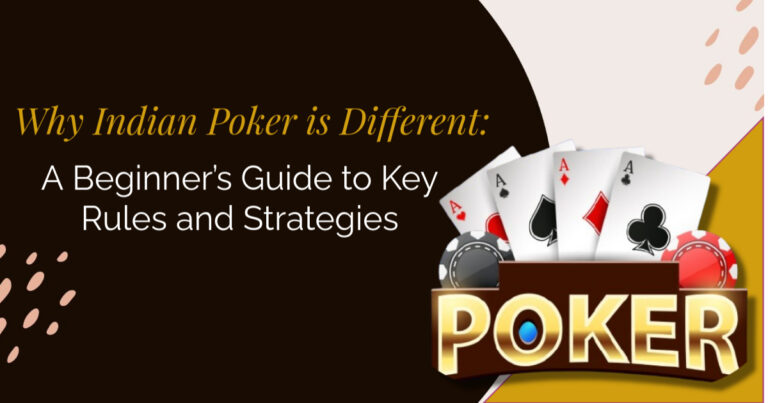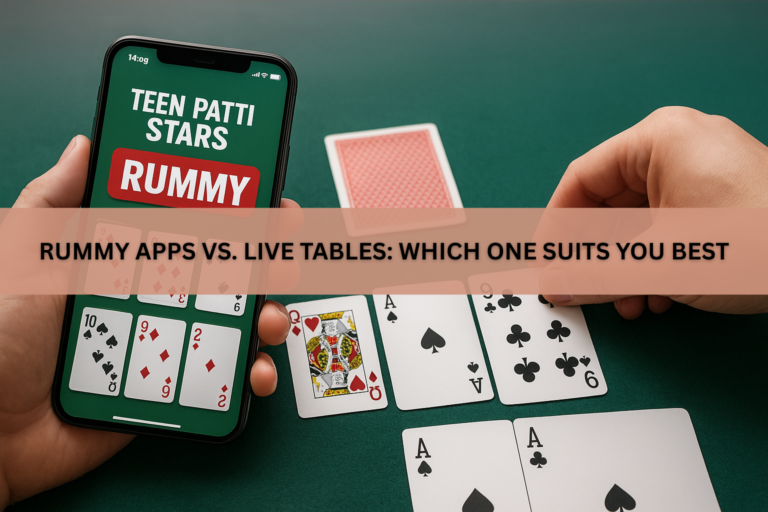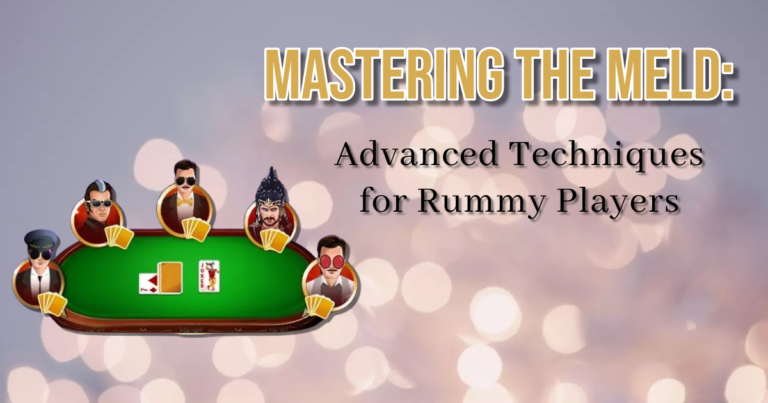When Should You Opt to Bluff in Teen Patti
Bluff in Teen Patti and Rummy game is a form of art, requiring careful timing and execution to deceive your opponents effectively. In this comprehensive guide, we delve into the intricacies of bluff in Teen Patti, providing insights and strategies to help you master this essential skill. From understanding the psychology behind bluffing to knowing the optimal situations to employ this tactic, this article covers everything you need to know to elevate your Teen Patti game.
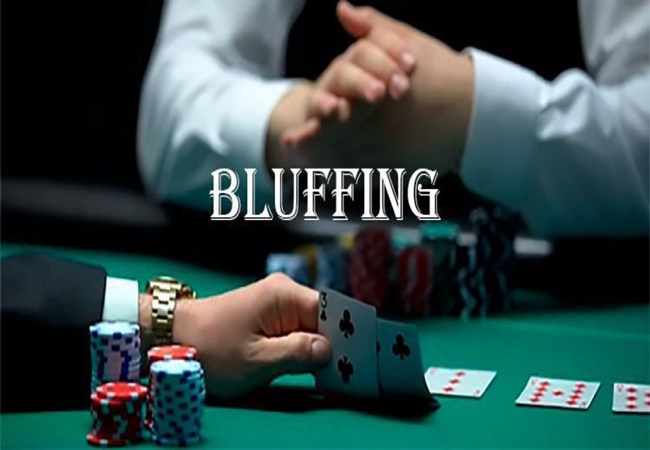
Bluffing is a quintessential aspect of Teen Patti, a popular card game known for its strategic depth and psychological intensity. While bluffing can be a risky endeavor, it also presents immense opportunities for skilled players to manipulate their opponents and seize control of the game. In this article, we explore the various facets of bluffing in Teen Patti, offering valuable insights and practical tips to enhance your bluffing prowess.
Understanding the Basics of Bluff in teen patti
What is Bluff in Teen Patti?
Bluffing in online Teen Patti refers to the act of betting or raising with a weak hand in the hopes of convincing your opponents that you have a strong hand. It involves using deception and psychological tactics to mislead your opponents and induce them to make suboptimal decisions.
The Psychology of Bluffing
Bluffing exploits the psychological tendencies of opponents, capitalizing on their fear, doubt, and uncertainty. By projecting confidence and conviction, a player can persuade their opponents to fold stronger hands or make aggressive moves, thereby gaining an advantage in the game.
Elements of a Successful Bluff
To execute a successful bluff in Teen Patti game, several key elements must align:
- Timing: Bluffing at the right moment is crucial. It requires patience and awareness of the game dynamics to identify opportune moments to bluff.
- Table Image: Your perceived table image influences the effectiveness of your bluff. A tight and conservative image enhances the credibility of your bluff, while a loose and aggressive image may arouse suspicion.
- Bet Sizing: The size of your bet plays a critical role in bluffing. A well-calibrated bet size can convey strength or weakness, influencing your opponents’ decisions accordingly.
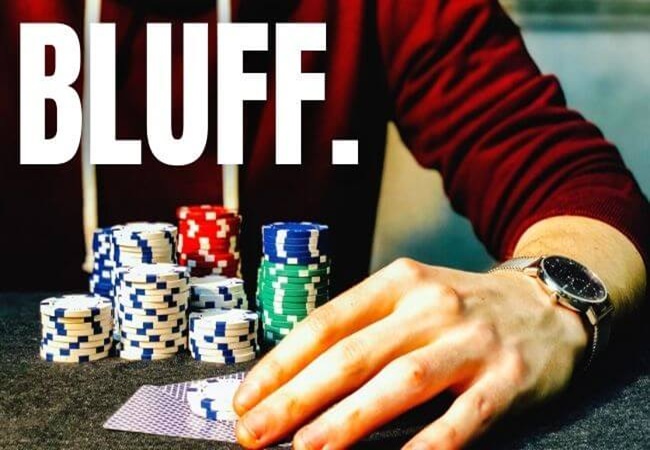
When Should You Opt to Bluff in Teen Patti
Bluffing is a high-risk, high-reward strategy that should be employed judiciously. Here are some situations where bluffing can be particularly effective:
1. When You Have a Weak Hand but Strong Table Image
If you have established a tight and conservative table image, bluffing with a weak hand can catch your opponents off guard. Your opponents may perceive your bet as indicative of a strong hand, leading them to fold their holdings.
2. When Your Opponents Show Weakness
Observing signs of weakness from your opponents, such as hesitation or reluctance to bet, presents an opportunity to bluff. Capitalize on their uncertainty by making a confident bet or raise, forcing them to fold their marginal hands.
3. When the Board Presents Favorable Bluffing Opportunities
Certain board textures lend themselves well to bluffing. For example, coordinated boards with multiple high cards are conducive to bluffing, as they are less likely to have improved your opponents’ hands.
4. When You’re in Late Position
Bluffing from late position affords you greater control over the hand, as you have more information about your opponents’ actions. Take advantage of this positional advantage to execute well-timed bluffs against unsuspecting opponents.
5. When You Have Read Your Opponents Effectively
If you’ve been able to discern patterns or tendencies in your opponents’ behavior, use this insight to craft targeted bluffs. Exploit their weaknesses and capitalize on their predictability to extract value from the hand.
6. When the Stakes Are High
In high-pressure situations where the stakes are significant, bluff in teen patti can be a potent weapon. The intensity of the moment may cause your opponents to second-guess their decisions, making them more susceptible to being bluffed.
Conclusion
Mastering the art of bluff in Teen Patti is a challenging yet rewarding endeavor. By understanding the psychological dynamics of the game and honing your strategic acumen, you can leverage the power of bluffing to outmaneuver your opponents and emerge victorious at the table. Remember, success in bluff in teen patti requires a delicate balance of deception, timing, and intuition. Keep practicing, stay observant, and trust in your instincts to become a formidable bluffing maestro in Teen Patti.
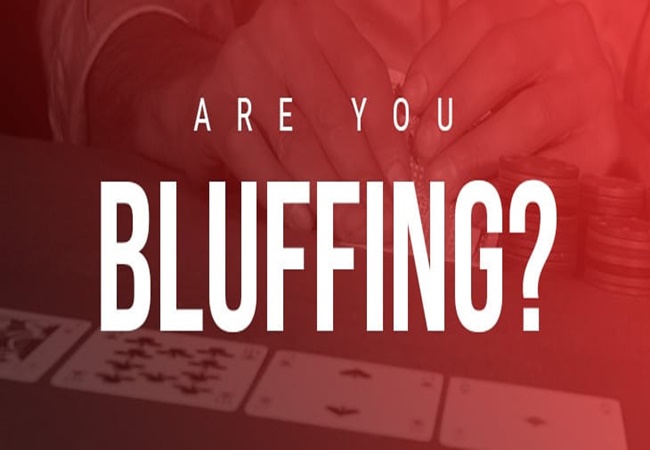
FAQs (Frequently Asked Questions)
How do I know when to bluff in Teen Patti?
Knowing when to bluff requires a combination of situational awareness, opponent analysis, and risk assessment. Look for opportunities where bluffing is likely to yield the highest expected value based on the dynamics of the game.
Is bluffing ethical in Teen Patti?
Bluffing is an integral part of the game and is considered a legitimate strategy. However, excessive or deceptive bluffing that violates the spirit of fair play may be frowned upon.
What are some common bluffing tells to watch out for?
Common bluffing tells include hesitation before betting, sudden changes in demeanor, and irregular betting patterns. Pay attention to these subtle cues to discern whether your opponents are bluffing.
How can I improve my bluffing skills in Teen Patti?
Improving your bluffing skills requires practice, observation, and refinement. Analyze your past bluffing attempts to identify strengths and weaknesses, and continually strive to adapt and improve your bluffing strategy.
What should I do if my bluff is called?
If your bluff is called, remain composed and assess the situation objectively. Avoid becoming emotionally invested in the outcome and be prepared to adjust your strategy accordingly based on the new information revealed.
Are there any risks associated with bluffing in Teen Patti?
Bluffing carries inherent risks, as it involves wagering with a weak or uncertain hand. If your bluff is unsuccessful, you may lose chips or damage your table image, making future bluffs less effective.

